Khakassia: attractions. The Republic of Khakassia. Khakassia

The lands of Khakassia keep many sights and scenic spots: the Ancestral Trail, the mysterious Tarpig Fortress, the Tuim Failure and much more.
There are more than 30 thousand monuments with incredible cultural and historical value: the ruins of ancient buildings, rock paintings, burial mounds and burial grounds (Uybatsky and Kopensky chaatasy), stone sculptures, as well as defensive fortifications.
This marvelous land is the carrier of a rich history, he remembers inglorious defeats and times of rapid development.
The Republic of Khakassia is located in the south of Eastern Siberia and is included in its composition. It is adjacent to the Krasnoyarsk Territory, as well as the Republic of Altai and Tyva.
The administrative center recognized the beautiful city of Abakan. Most of the hotels are located in it: "Hummingbird", "Kantegir", "Person", "Meridian", "Borus", "Anzas" and others.
However, a tourist can settle in one of the recreation centers: "Mirage", "Snow Leopard", "Ergaki". In total there are about 130, but the level of service and comfort of rooms leave much to be desired.
Most of them are reconstructed in the summer. In the republic there are various sanatoriums of the health-improving profile "Sayan Grace", "Misty", "Abaza". Total about 17 items.
Among other problems hampering the increase in the flow of tourists to the Republic of Khakassia, we note: undeveloped infrastructure and some discrepancies with international standards, sometimes inappropriate correlation of quality and price of services provided, poorly thought out entertainment program.
The most beautiful places of Khakassia
However, the republic is still a desirable destination for a huge tourist flow.
For example, lovers of active pastime seduces skiing base "Gladenkaya", built near Sayanogorsk.
It includes the entertainment complex "ZHarki", hotels and magnificent ski slopes. The ski season lasts a little more than six months.
The relief of the area combines the intermountain lowlands and ridges. Khakassia is subdivided into flat (Minusinsk basin) and mountainous (for example, Western Sayan, Abakan range) parts.
The largest river is the Yenisei
The largest river in this region is the Yenisei with the Abakan tributary. Other significant water arteries that make up the Ob basin include Chulym, Tom, White and Black Iyus.
In addition, there are a lot of fresh (Snort), salt (Bele, Shira) steppe and mountain lakes in the region.
In addition, the silt mud of some of them (Shira, Utchiye-3) has found application in the medical industry.
The waters of Lake Bele possess properties similar to those of the famous Karlovy Vary spa.
In Khakassia, a sharply continental climate prevails, so the summer is sunny and warm, and the winter is cold. This republic has been granted even more sunny days than the resort city of Sochi.

Cave Pandora's Box
- For tourists, a cave with the mythical name Pandora's Box, 35 km long, is of interest.
“There are many galleries, grottoes, halls, cascades, wells, and about 400 lakes with water as clean as a tear. This is one of the longest caves in Siberia and is only as long as the Big Oreshnoy.
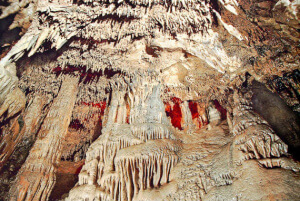 Kashkulakskaya cave
Kashkulakskaya cave
- Another no less interesting and even cult place is the Kashkulakskaya cave, which is also called the “Black Devil's Cave”.
“This is one of the most mystical and mysterious places in Russia, since the huge stalagmite located near its entrance was once considered a symbol of the continuation of fertility and kind.
- Not far from it there was a fireplace, the age of which is estimated at several millennia.
“It was here that prayers were given to the gods, and sacrifices were made, including human.
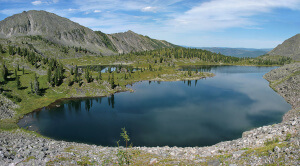 Lake Shira
Lake Shira
- Lake Shira is recognized as the main therapeutic and recreational resort place. It is unique in that it contains magnesium sulphate and Glauber's salt.
- There are only 4 similar reservoirs in the world. This unique complex is a kind of pearl of South Siberia.
Sources of mineral waters
- In addition, thermal sources of mineral waters, for example, sodium bicarbonate, containing silicic acid and hydrogen sulfide were discovered in Khakassia.
“There are a total of 24 mineralized reservoirs in the republic, the water of which can be used for swimming, bathing, drinking, etc.
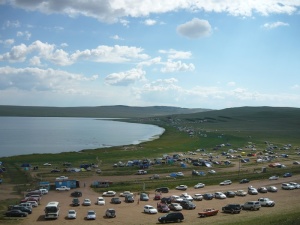
What else to see in Khakassia
Lake Tus
- Let's say, Lake Tus can even compete with the famous Dead Lake in Israel for its healing properties.
- The amazing properties of its waters were revealed in the XVIII century.
Nature reserves
- In Khakassia, 3 natural reserves have been established, the Iussky, Karatosh-Iney and Bogradsky. Their task is to preserve forest and mountain ecosystems, as well as archaeological monuments.
- Here you can admire the lynx, maral, vole, otter, musk deer and bear.
 Ridge Chests
Ridge Chests
- Tourists will certainly be attracted by the ridge of the Chests along with the stunning Temple of Time, belonging to the monuments of the Tagar culture.
- At the peak of the mountain there is a rocky remnant, called “the chest of the great hero Hoho-Babai”.
- After all, the Chests are the remains of an old astrological observatory, whose age is approaching 13-14 thousand years!
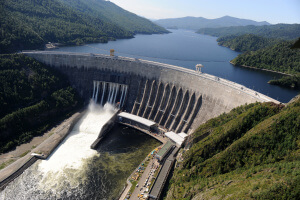 Sayano-Shushenskaya HPP
Sayano-Shushenskaya HPP
- The pearl of Khakassia is the Sayano-Shushenskaya HPP, which is the largest in Russia. Those interested can visit the museum of this grand structure, which reflects its 30-year history.
Lead the results
So, in the Republic of Khakassia developed the following tourist destinations: sports; cultural and educational; health tourism, etc.
Khakassia has managed to carry its traditions and rituals through the centuries, for example, the basis of numerous holidays is the idea of an unshakable link between man and nature.
For example, summer is marked by nationwide festivities, celebrations in honor of the First Milk Festival (Tun Payram).
Tourists at this time can admire the competitions of wrestlers, riders, archers and unique original art.
So, it’s not for nothing that Khakassia is called “Siberian Switzerland”.
The Republic of Khakassia is located in Southern Siberia in the left-bank part of the Yenisei basin, in the territories of the Sayan-Altai Highlands and the Khakass-Minusinsk Basin. The major rivers are the Yenisei, the Abakan, the Tom, the White Iyus, the Black Iyus, the Chulym (the last four belong to the Ob basin). On the Yenisei - Sayano-Shushenskaya hydroelectric station and the Mainskaya hydroelectric station.
The date of the official establishment of Khakassia for the Russian Empire can be considered August 20, 1727, when a border treatise was concluded between Russia and China. All the lands located on the northern side of the Sayans, were ceded to Russia, on the southern - to the Chinese Empire. The actual consolidation of the territory of Khakassia occurred later. In 1758, Chinese troops invaded Altai and defeated Dzungaria. There was a threat of violation of the officially recognized borders of the Russian Empire. On this plot of theirs, the tsarist government quickly placed Cossack garrisons. From the time when the Cossacks began to carry the border service, Khakassia actually became attached to the Russian Empire.
At the end of the 19th century, the Khakas were subdivided into five ethnic groups: Sagay, Kachins, Kyzyls, Koibals, and Beltyrs. Russia gave a strong impetus to accelerate socio-economic and cultural development. The creation of industry, the development of natural resources, the creation of a health care and education system began.
70 kilometers from Abakan, if you go in the direction of Sorsk, there is the Salbyk Valley, which is also the Valley of the Kings and the Valley of the Spirits. The kings are the leaders of the Tagar tribes solemnly buried here in ancient times. Today in the valley the open-air museum “Ancient Barrows of the Salbyk Steppe” is organized. Bolshoy Salbyk Kurgan was excavated by archaeologists and investigated in the middle of the 20th century, at the same time they found that it was plundered in the Middle Ages. The valley is a protected area, but also a place for rites (which is confirmed by the official sign). Five kilometers from the Big Kurgan are the so-called “Shaman Gate” - two menhirs, male and female. Both are considered sacred and mere mortals pass between them is not recommended. This can only be done by a shaman during the rite. The ridge of the Chests, stretching for two kilometers in the Shirinsky and Ordzhonikidzevsky districts of Khakassia, occupies a special place in the lists of Russian “places of power”. The chests are called Siberian Stonehenge, although the five cliffs of the "chests" of an unusual shape are not man-made, but natural works.
There are as many petroglyphs in Khakassia as in Karelia. The most significant monuments are Sulek pisanitsa in the north of the republic, associated with shamanistic cults, and Boyar pisanitsa with various everyday scenes in the Bogradsky district. Rock paintings can be seen in the reserve "Kazanovka" in Askizsky district. This is perhaps the most interesting place for those who are interested in genuine folk culture. Kazanovka - an open-air museum, which preserves the historical landscape and the historical way of life. On the territory of Kazanovka there are six villages, two thousand archaeological monuments, four “trails of the spirits”, recreated aal (traditional settlement) with all typical buildings, the healing stone Ah-Tas, the sacred rock Iney-Tas - in general, the tour of the reserve will be a complete immersion in the Khakass world.
Khakassia is the land of a large number of historical and cultural attractions and natural beauties. There are more than 30 thousand different monuments with ancient and modern history, global cultural value. Come to Khakassia to walk along the Path of your ancestors, to visit the mysterious corridors of Tarpig, to learn the secrets of Tuim failure.
The region has preserved ruins of ancient structures, large-scale citadels, burial mounds, burial grounds. Cave paintings, various archaeological finds, and stone sculptures are of great interest to scientists and tourists. The region throughout its history has known the pages of devastation and the era of rapid development. Monuments of historical events throughout the territory of Khakassia.
Sights of Khakassia: what to visit tourist
Hospitable Khakassia is fabulously beautiful mountains, at the foot of which lie steppes with picturesque steppe and mountain lakes. Reservoirs here with healing water (fresh and salt), the rivers are swift. In the region, natural objects with a unique color attract travelers - seekers of fresh impressions.
Watch on vacation in Khakassia, you will be unique museums under the open sky and hidden under a layer of soil. In them, the history and nature created by the exhibits: objects of cultural heritage, archeology, unique landscapes, dungeons. “Archaeological Mecca” in Siberia is Khakassia. The region is famous for thousands of stone sculptures, mounds.
Interesting natural objects: caves. They are many in Khakassia. Be sure to recommend tourists to visit Pandora's Box. The length of underground corridors here is more than 35 km. More only cave Oreshnaya. The galleries and halls, cascades and grottoes, wells, and lakes with the purest water, which are beautifully decorated with nature, open to ghosts that stepped into the realm hidden from the sun. It is estimated that there are about four hundred reservoirs in the cave.
The mystical, cult place is the Kashkulakskaya cave or, otherwise, the Black Devil's Cave. Here at the entrance is a giant stalagmite, which was previously worshiped as a symbol of procreation, fertility. Not far from the frozen "guard" fireplace. It is believed that the flames fired here a few thousand years ago. In the cave they prayed to the gods, performed ceremonies, sacrifices.
Lake Shira is not only a local resort. The healing effect of the local waters provides a special composition with magnesia sulphate and glauber's salt. In the world there are three more analogs of Lake Shira. Fairly a reservoir, the nature complex around the lake is called the pearl of Southern Siberia. In total, Khakassia has more than two dozen mineralized reservoirs. Here, with health benefits take baths, water consumed as a drink, etc. 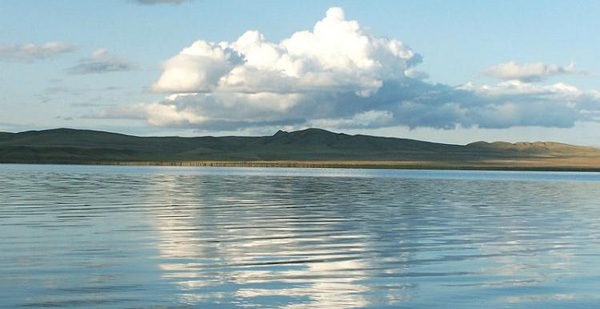
In addition to the naturally formed natural attractions in Khakassia, many man-made objects that have become monuments of nature. Tuyma failure - an amazing education, resulting from mining. Tons of tungsten, copper, and molybdenum rose from the ground in tons, thousands of trolleys. In the middle of the 20th century, the mine became dangerous for the people working here. The preserved mine (roof) subsided, the funnel reached several meters in diameter.
Currently Tuimsky dip 200 meters wide, at the bottom of its beautiful bright blue lake. The color of the reservoir has no mystical explanation, although there are many legends in the district. The high content of copper in the soil affects the color of the water. The unusual place attracts many fans of outdoor activities. TV shows are filmed here. The organizers of the popular show "Fear Factor" organized one of the tests in Tuim failure.
Ancient fortresses of Khakassia
In ancient Khakassia, people erected fortresses. The most famous of them: Chebaki and Khara-tag, Sohatin, Tarpig. Each citadel has its own story. At different times, studies were conducted defensive structures.
On the right bank of the Black Iyus River, the top of the Sve-takh mountain is decorated with the Chebaki fortress. The fortification was investigated by the first archaeologist Klements as early as 1888. Walls up to 1.8 meters high are made of massive sandy slabs, mostly half-destroyed, in some places the masonry is perfectly preserved. Excavations after more than a hundred years discovered new secrets of the fortress. This is a unique monument of architecture and fortification of the age of 2 millennia BC. (Bronze Age). 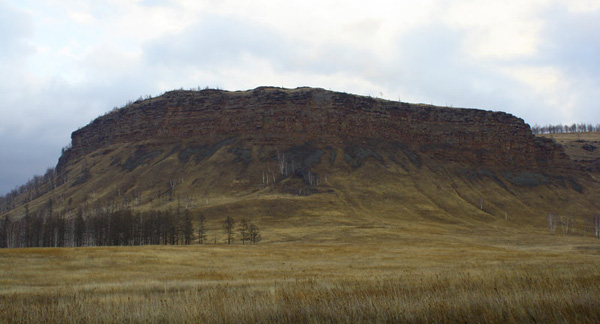
The fortress Sohatin towers on Mount Sohatin, which is on the left bank of the Bely Iyus river. The maximum height of the walls is 1.6 meters, and the thickness reaches 2 meters. Masonry preserved quite well. Worked on the creation of the citadel literate and accurate masters of antiquity. Entrance to the building on the east side.
The Khara-Tag fortress adorns the mountain of the same name, which is a few kilometers southeast of the Podkamen ulus (Ordzhonikidze district). Fortifications with internal sections, sections, between which powerful stone walls up to 2 meters high. The sandstone slabs that make up the walls are folded flat dry. In the fortress, the plots are isolated from each other, they are completely independent, which is explained by different periods of their construction.
Ridge Chests
The unique nature monument of Khakassia - the mountain ridge of the Chests belongs to the objects of federal significance. To the north of Abakan rise a striking form of mountain formations, which are associated with many legends. The length of the chests is more than four kilometers. Ufology and esoteric compare the mountain range with the European Stonehenge.
 Local shamans are convinced that the Chests are the abode of power and ties with the world of spirits. At the same time, geological scientists very simply explain the shape of the hills and insist that it’s not uncommon in the Khakass-Minusinsk depression when the western side of the mountains and hills is gently sloping, and there is a cliff from the east.
Local shamans are convinced that the Chests are the abode of power and ties with the world of spirits. At the same time, geological scientists very simply explain the shape of the hills and insist that it’s not uncommon in the Khakass-Minusinsk depression when the western side of the mountains and hills is gently sloping, and there is a cliff from the east.
Each of the five Chests is numbered and is called: First, Second, etc. Also, the hills have their own names in Khakass. They are no less distinctive than the appearance of the mountains: Crest-Chaya, Orto-Chaya. One of the hills at the top has the remains of an ancient fortress wall. There is a fragment, really in a form identical to a chest. They say that the treasures of the hero Khokho-Babay are hidden here. An entire exposition of the local history museum in the village of Shira is dedicated to chests.
You can talk about the sights of Khakassia for a long time. Mounds - a separate story. We mention the largest archaeological monument in Khakassia - the Big Salbyk Kurgan or the Salbyk Basin. The pyramid of earth and stone stands at 30 meters and is the burial place of the Dinling ruler and his family. The monument was first described in the first half of the 18th century.
During one trip through Khakassia, it is impossible to see even half of the local interesting objects. This is the largest in Russia Sayano-Shushenskaya hydroelectric power station, another gem of the region. A grand building with a 30-year history and now is striking in its scale. You can learn about the history of hydroelectric power plants by visiting a special museum. 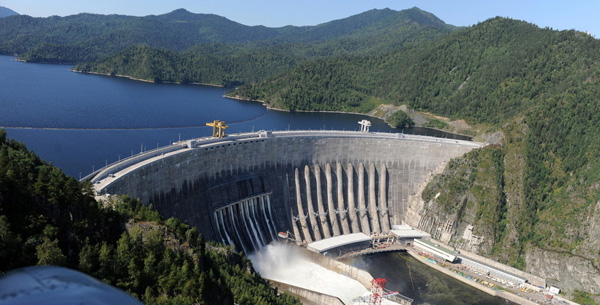
Come to Khakassia! Summer is a great time for active and informative tourism. But in other seasons, the Republic of Khakassia confirms the comparison with the "Siberian Switzerland". You are waiting for original holidays, nationwide festivities - ethnic tourism with its unforgettable atmosphere. A familiarity with local attractions will bring many vivid impressions.
A fertile land with little snowy winters lay in the path of migrations of peoples during the Great Migration, and many settlers chose Khakassia as their home and left amazing monuments of ancient culture here. In the steppes and caves of Khakassia, more than 30 thousand monuments of ancient epochs, most valuable for the history, are preserved - sculptures on stones and barrows, petroglyphs (drawings and letters on rocks), ruins of buildings made of mud brick and fortresses, burial grounds and burial places, menhirs and sculptures ... From Many archaeological sites are unique and are not found anywhere else in the world. The most famous are the Big Salbyk Kurgan, the Sulek, Boyar and Podkunensky pisanitsa, the archaeological monuments of the Chests mountain system, the Oglakhty fortress, the Chebaki, the medieval burial grounds of the Copenza and Uybatsky chaos.
Khakassia is one of the few regions in Russia where the drawings on the rocks and statues shake with their most powerful cosmogonic philosophy. Scientists are trying to solve all the riddles left to us by the ancient peoples in the heritage, on these monuments of the ancient visual arts. So if you come to Khakassia, you also have the opportunity to penetrate the sacred world of the ancient Khakass culture!
So, tourism in Khakassia is interesting for its unique unspoiled solar nature and originality of this region. In this review you can read about some of the most interesting places in the archaeological Mecca of Siberia! 
Many mounds in Khakassia are thousands of years old. One of the most famous Khak's mounds is the Salbyk barrow. The construction dates back to the end of the 4th century BC, to the Tagar culture. Initially, the mound stood at 25-30 meters above the steppe. Its basis was made up of multi-ton stone blocks, reaching a height of 6 meters. Surprisingly, these blocks for the construction of the mound could be taken only on the banks of the Yenisei, seventy kilometers from Kurgan, surrounded by bare steppes! At the cost of what efforts were these plates dragged, if their weight reached fifty tons, and from the transport at that time were there only bulls? And all this gigantic work was sent to bury one person! Who was this dead - King? What was his power? In terms of monumentality, the Salbyk Kurgan can be equated in some way with the Egyptian pyramids. Unfortunately, the mound of the mound was excavated by scientists, and today from Kurgan there are only lumps themselves standing in a circle, but still, despite the huge number of people who visited it, the Salbyk kurgan keeps powerful energy that you will feel on yourself. 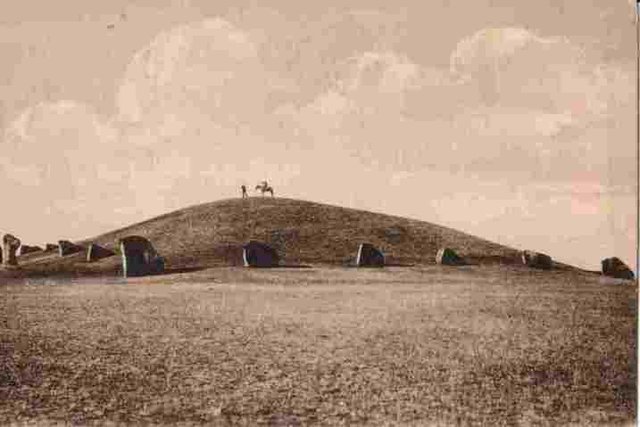
This energy has different charges. Positive energy at the “gates” of the Bolshoy Salbyk barrow. But the northern, rounded shape, a plate of highly separated sandstone has a negative charge. The shamans say that the energy emanating from the earth corrects the disturbed human biofield.
Khakass National Museum-Reserve "Kazanovka"
 On the territory of the Askiz district of Khakassia, where the living Khakass language still sounds and Khakass rituals are held, in 1996 the Khakass Republican National Museum-Reserve Kazanovka was created.
On the territory of the Askiz district of Khakassia, where the living Khakass language still sounds and Khakass rituals are held, in 1996 the Khakass Republican National Museum-Reserve Kazanovka was created.
The museum-reserve area is 18.4 thousand hectares and here you can find all kinds of cultural and natural heritage of Khakassia: landscapes that have remained intact for thousands of years and an interesting archaeological foundation - petroglyphs, burial mounds, fortresses, ancient sanatoriums, ecological paths. In Kazanovka you can live a week and every day go on a new interesting excursion!
Chests
There is in the Shirinsky district a mountain range of Chests - a unique monument of Tagar culture. The chests were named like this because of the first mountain in the ridge, on top of which there is a cube-shaped rock, which calls it “the hero's chest of Khokho-Babaya”. According to beliefs, it contains all the treasures of the valley. Chests are the most ancient astrological observatory, more than 13-14 thousand years old! In ancient Khakas language this place is called “Onlo”, which means “to see”, “to observe”. From here the ancient astrologers watched the sunsets and sunrises of the sun and moon. 
In Onlo there is a unique, only one on Earth, a monument - the Temple of Time. If you climb the Temple of Time, then you understand what it was for. In front of the mountain on which the Temple is built, there is a stone masonry. You will face her at the Temple, look to the right, and you will see the projecting summit of the fourth “chest”. This is the exact astronomical direction to the north. From this point, the priests determined the winter solstice. Through a crack between a stone that looks like an eagle's head and a mountain, the Sun sends the Earth the last ray and sets over the horizon. 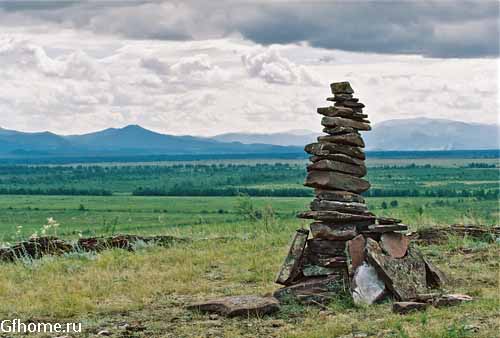
In the Temple of Time there is an image of a dragon divided into six equal parts. This is a sunny, year-round working hours - one of the first on earth! From sunrise to noon, the shadow of the wall slides from left to right, passing one division in about an hour. At noon, the temple of time is fully illuminated, and in the afternoon, the shadow of the wall slides in the opposite direction, passing one division in just a few minutes.
Posted by Sun on 05/29/2016 - 10:25 by Cap
Khakassia is an interesting and mysterious region located in the Western Sayan mountains, just east of Altai. The junction of the Altai and the Sayans makes this place mysterious and attractive!
Remnants of ancient beliefs, practiced shamanism, pathogenic places, mysterious caves in the taiga, habitats of spirits - all this and much more is found in Khakassia.
As for the anomalous zones, there are three of them in Khakassia. There is a Death Valley in which the curvature of the space-time continuum occurs (temporary bag). Let's say not the most pleasant place. Located in the north of Khakassia. The second place is located 33 kilometers upstream of the Abakan River from our city Abakan. Quite often, people who spent the night in that valley went crazy or died under strange circumstances.
The third is located in the region of the Lake Snorting towards Kommunar to the north, but there is no way to get there by car, just on foot. Dying place, even the beast bypasses it. Ufologists say that it is part of one of the twelve anomalous triangles on the planet, such as the Bermuda triangle.
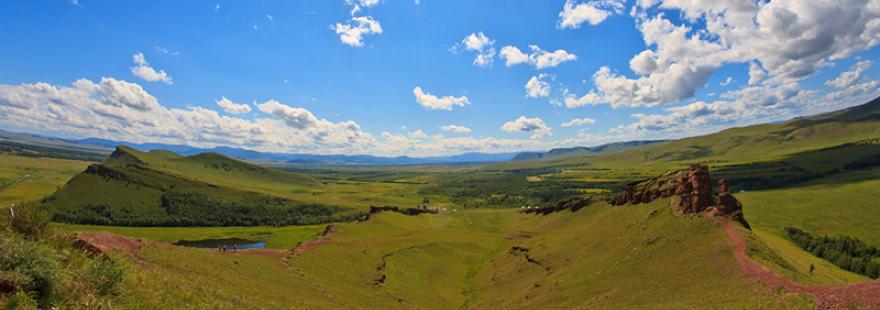
"Chests" in Khakassia
Imagine a valley with a diameter of 12-15 km, surrounded by mountains. In fact, in the center of this valley there are stone pyramids - in the nature of them they are called “Chests” for an unusually correct form of peaks in the form of squares.
The length of these pyramids is about 300 m, the height is 60-70 m. They are, in general, a complete copy of the Aztec and Mayan pyramids. When I first saw them, I was just lost,
I do not believe my eyes. According to profession, I am a historian, an archeologist, and to see this in my side is something unimaginable. Next to these pyramids are three villages.
At first, naturally, I began to ask about these constructions of local residents. Fortunately, one of my fellow students lived in such a village, and through him managed to get acquainted with many. All firmly in one voice - the place is dark, there are constantly "spirits" flying, in no case there is no need to go there. To my desire to spend the night on the top of the most preserved of all the pyramids (and there are about 12 of them), the reaction as a plague patient. Spread with your finger at the temple and try to quickly slip away.
Finally, with two items I stayed on the Chest. The night passed relatively quietly, except for the mystical things, like - exactly at twelve o'clock the wind was blowing and there was an extraordinary silence. It was audible how, in a distant village, about ten kilometers away, bells sound at the crust. Then suddenly a small hollow filled with thick fog. And then, in the absence of any wind movement, I suddenly heard the rustling of the branches and woods of the foliage (there was larch in the hollow). This, sorry, could not be. However, we digress from the topic.
So here. The wind again blew out exactly at 3 o'clock in the morning. (Later I checked, sleeping several times, all wonders are exactly according to the graphics!). After a few hours the sun began to go out, and since it was a full moon, I looked to the west, the Moon was setting there - but what happened to it! The dark red disk began to ratchet around unbelievably around its axis, changing the form, increasingly striving for an ellipse. Moreover, all these metamorphoses occurred in a matter of minutes or seconds! While the sun had not risen almost completely, we with a friend (the second slept in a tent), stared at the blood drive, unable to tear away.
Much time has passed (it was 1991), but so far, although not so clearly, I remember this morphed disk of the Moon in my desires. He did not promise anything good.
When we came to the village and slept properly, I began to ask the locals, and found out that all sorts of UFOs of all sizes, from balls to tarelok, and all sorts of colors, will be searched in the valley of the Chests. When their accuracy is especially high, no one knew, just noted the days of their appearance. Among other things, I was told that near one of the "Chests", a stone was dug out during Soviet times (they plowed a field and opened a shaman's grave with a contractor), on which the constellations of the other hemisphere were visible, and some stars that were barely visible were painted by fat. .
Honestly, I didn’t manage to check this information, some say that everything found was taken to some St. Petersburg institute, others don’t really remember anything, so I can’t confirm it, let alone verify it. Ho! A world-famous scientist, professor, writer, and archologist Vitaly Epifanovich Larychev goes to this valley already for more than 20 years. He even has a book on "Chests." I was very interested in this strange connection between Chests and UFO. In general, there are many legends and stories about this valley. It is well known that a mighty people lived there for a long time, for building stone houses, strongholds, skillfully used the natural constructions. And when the Mongols in the 12th century came here - they cut out the entire population and tried to destroy all the buildings! There was no such thing following them. To all and all !!! Now no one knows what was there, and who lived there !!!
I, for example, strongly suspect that there was not at all a simple people who professed their completely non-shamanistic religion. There is a suspicion that in the littered tops of the chests there are hollow places and there is something waiting for its time. By the way, I forgot to say. If scientists cannot even tell the exact date how long people lived back in the valley, what time they called the existence of the pyramids — 35–40,000 years ago they arose, and since then they are almost unchanged!
Located in the Kuznetsk Alatau (Khakassia), four kilometers from the village of Malaya Syya, on the left bank of the White Iyus River. The length of the cave passages is about 11,000 meters and the depth is 195 meters.
Opened cave in the 1970s. The name of the cave was proposed by a Novosibirsk biologist and was chosen by lot from a number of other names.
The cave has numerous wells, large halls, galleries on several levels, cave lakes, and drip formations.
One of the most dangerous caves in Russia.
In the cave "Pandora's Box" from the moment of its discovery to the present, there have been three fatal accidents.
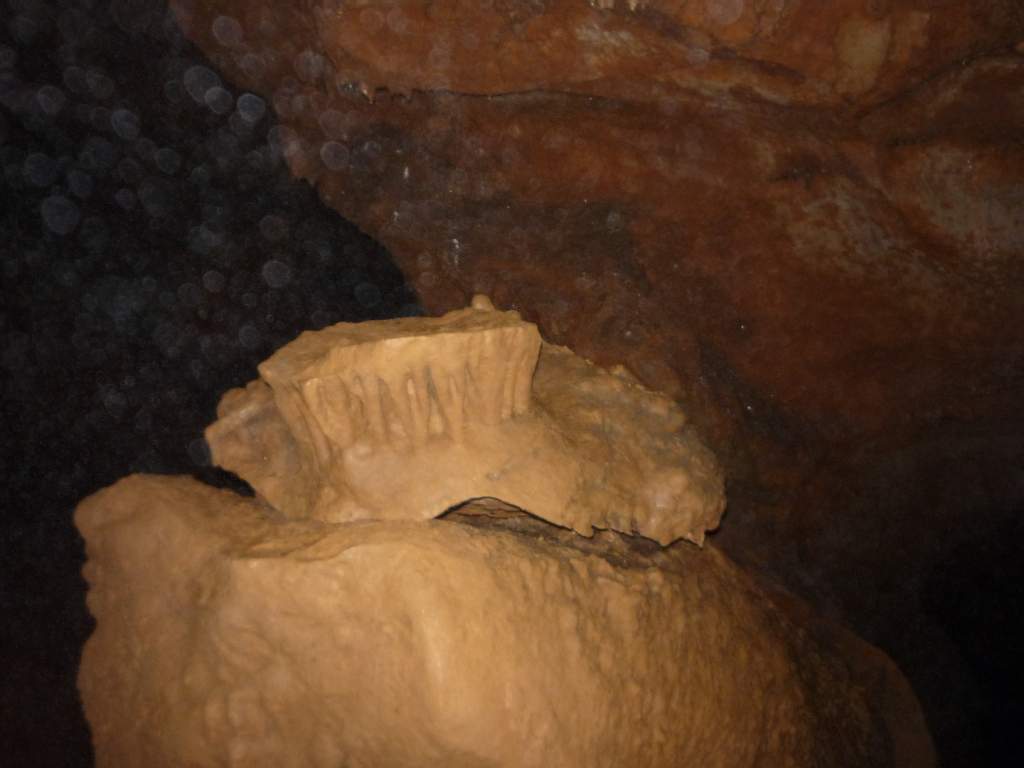
PANDORA'S BOX. GENERAL INFORMATION.
The Pandora Box is a cave on the left bank of the Bely Iyus River, in the Kuznetsk Alatau, Republic (Khakassia).
The length of the mapped cave passages is about 11 km, the depth is more than 180 m. Currently, at the initiative of Krasnoyarsk speleologists, work is underway on the new topographic survey of the cave, including the previously unresolved moves. The labyrinth-type cave, in limestone, has one entrance.
There are numerous wells, large halls, galleries on several levels, cave lakes, stream formations. The average temperature is +5 ° C.
There are bats.
The cave was discovered in the early 1970s by the staff of the Syy glaciological station. At that time, the cave was the only entrance light cave Wide. Since 1976, speleologists Osinnikov led by V. Vlasenko led attempts to penetrate the underground system through neighboring small caves.
In 1981, targeted excavations in the wide speleologists Osinnikov and Tomsk revealed a passage to the upper floors of the cave. Later, the cavers of Novokuznetsk also studied the cave. The name of the cave was suggested by Novosibirsk biologist N.P. Mironycheva-Tokareva, and was chosen by lot from a number of other options.
Cave Incidents
Three people died in Pandora's Box.
12/03/1989 Novosebire Andrei Ageev crashed to death.
In the summer of 2003, the Novosibirsk archeologist Stanislav Shubin died in the upper part of the cave.
02.02.2005 while trying to dig a course in the continuation at the bottom of the cave, the Novosibirsk caver Pavel Galkin died under the rubble.
There are also reports of missing tourists in the cave.
Anomalous phenomena took place in the cave.
Pandora's Box, Emerald Lake 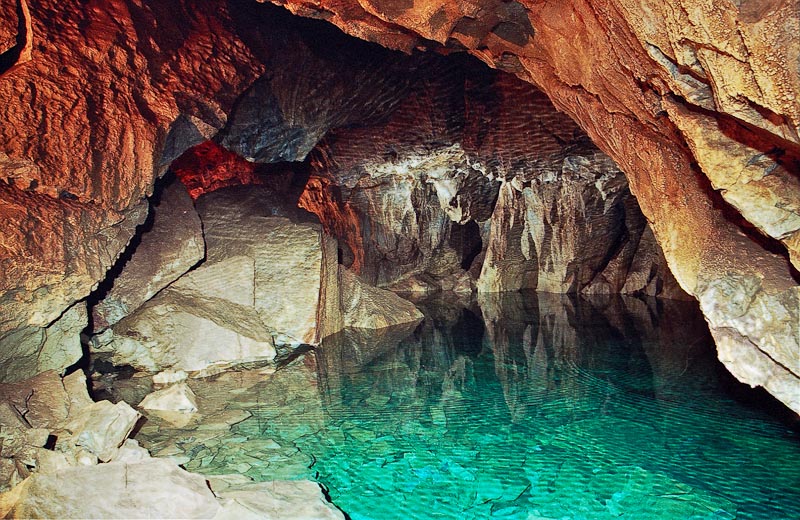
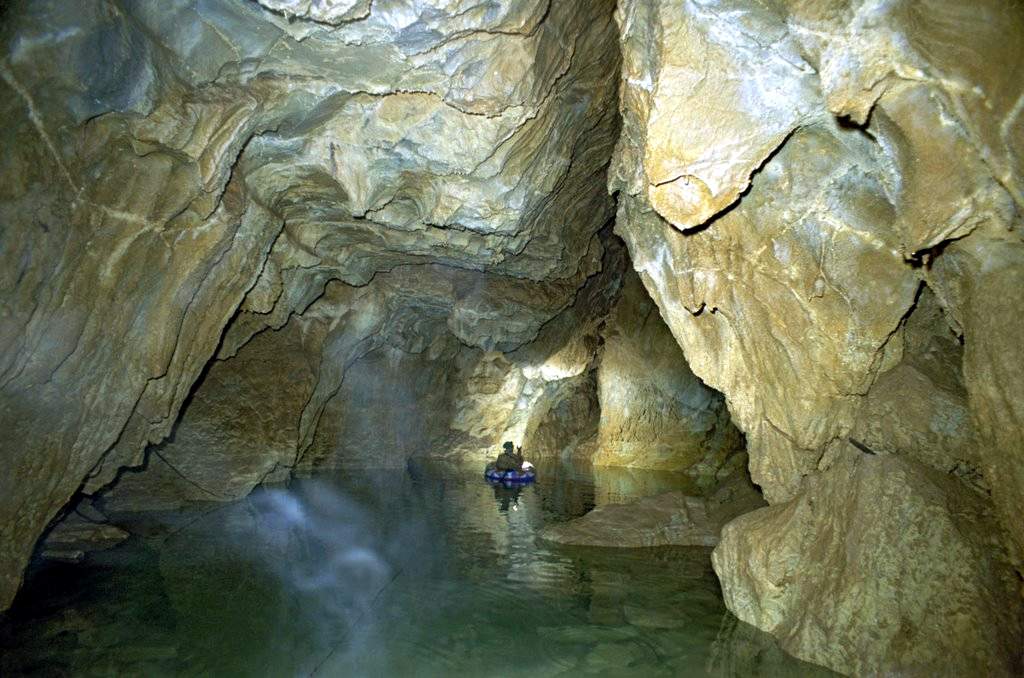
Sculpture Hurtuyah-Tas
Hurtuyah-Tas is translated as "Stone Old Woman". People believe that it helps and fulfills desires. Childless women go to her to beg for children, men ask about the fertility of the earth, cattle. Carry her gifts and left at the foot. It is located in the steppe of the Askiz district.
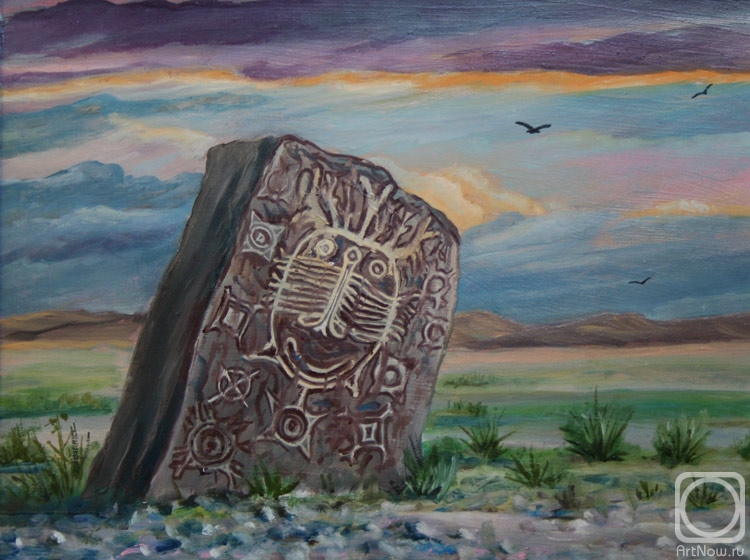
Seismic zone
Abnormal zones with high energy are often encountered. Old mounds with lying stone slabs are popular with residents. You get up on the stove, raise your hands up - and you are in the flow of power. Yesterday, 10.02, 170 km to the south of Abakan in the Tashtypsky region, another earthquake of 6 points occurred. Twenty years ago they did not hear about such phenomena in these places. Maybe seismic activity started in response to our visits?
"Askizsky poltergeist",
involuntary miracles in p. Askiz, from which killed three people. A book has been written on research material, which is being printed now, for a quantity of 5000 copies. in the publishing house "Science". There is a huge video material - three tapes for three hours each. Filming places, memories and stories of eyewitnesses, special shooting with the use of scientifically developed methods.
Research "Mercury person".
The handsome Жigachev / I do not remember the name /, I visited a flying teapot. After that, his body began to synthesize mercury! At first it was just bumps on his legs, the doctors assigned him a warm-up, lumps increased, he was cut and the doctors went horrified, mercury flowed out of the section! He was urgently sent to Krasnojarsk. I will not pretend much. I am impressed by the video filming / also about nine hours of video /, - the professor and the academicians in the hospital open his tumors - and of them mercury flows on the operating table! SUCH I REPRESENT EVEN I CAN NOT! Academics and professors spread their hands in front of the camera. His body is really synthesized mercury! Mercury clots were found in the muscles, skin of the legs, in the scrotum, in the skin. With a special scan in the clinic revealed mercury in the bones of the legs !!! All This is filmed !!! ALL seriously documented !!!

Suicide zone
Last week in Khakassia for two days five people committed suicide. In this regard, I recall one Indian film. The plot is as follows. The guy with the girl love each other, but the angry father of the girl does not allow them to get married, and the young, instead of sending him to hell, decide to jump together into the abyss. When a girl falls, she breaks herself to death, and the boy clings to his shirt for some kind of snag, which he cannot detach himself from, and thus remains alive.
In Russia, for a failed suicide, you can get rid of a week in a mental hospital, but in India (as well as in some other countries), it is possible to get enough time for it. In general, the guy gets a year in prison. When it comes out, finds another girl, marries her. But the evil dad of his first sweetheart is setting up a car accident for the newlyweds, as a result of which both are killed.
Several years ago, one of the Abakan psychiatrists told me in an interview that in some areas of Khakassia there is some kind of anomalous “suicidal” zone. It was then about Tashtypsky district. For some inexplicable reason, the region has the highest suicide rate in the region. Today, it is possible that such zones "moved" to other territories.
Like today a couple of years ago, people who decide to commit suicide mostly hang themselves and shoot. Shoot more often from hunting weapons. The free circulation of the fighting, as is known, has been forbidden in our country since the time of Lenin (although this ban has long been lifted in the former social camp of Eastern Europe, as well as in the Baltic states). This is probably correct. We are not the people to buy military weapons and lock it on seven locks. In the hands of our man, it will definitely shoot, and if not in others, then at itself. Any person on our streets will say that the number of murders and suicides will only increase in Russia from the lifting of the ban on the free possession of military weapons. But our government is not at all at hand. In vain, for the sake of improving the demographic situation, have we invented the so-called “maternity capital”?

Stone old woman INEY-TAS
Location: the picturesque Inye-Tas rock (Stone Old Woman) is located one kilometer to the northeast of the village of Kazanovka, in Askiz district of the Republic of Khakassia, on the left bank of the Askiz river
Since ancient times, Frost Tas patronized livestock breeding and, until the 1950s, “helped” people. In Inay-tas, tag taig was performed - ceremonies of sacrifices to the mountain spirit, the patron of the family and asked for help in various matters. At the very foot of Iniei-Tas, a platform on which 14 sculptures of domestic animals were installed was cleared and sprinkled with river sand. Bulls, horses, sheep were made of river pebbles and red sandstone. From this collection there are only three figures left. And in the very beginning of the 60s of the last century, Inei tas itself was blown up.
During the war and in the postwar years, people began to come to Ina Tas again and to conduct ceremonies here. The then ideologists did not invent anything better than to destroy the cult monument. The amazing open-air temple was destroyed. They say that after that the cattle in Khakassia began to get worse. They also say that none of the participants in this blasphemy finished their lives safely. And Frost-tas and after the "death" enjoys special reverence.
Now the mountain where the stone stood was called Frost-paar (the base of Frost). Rituals are again held here, passing by all means doing “sec-sec”, on the branches of birch trees, the grove of which surrounded the place where the Stone Old Woman stood before, is tied with chalama. Those who have been here can fully experience the beauty and strength of this unusual place where Grandma Frost, even having lost her former appearance, helps her people again.
Getting there: from Abakan to Askiz village (92 km.). Next to the village Kazanovka about 30 km
Geographical coordinates: 53.22589 90.071927
Address:
Askiz district, with. Kazanovka
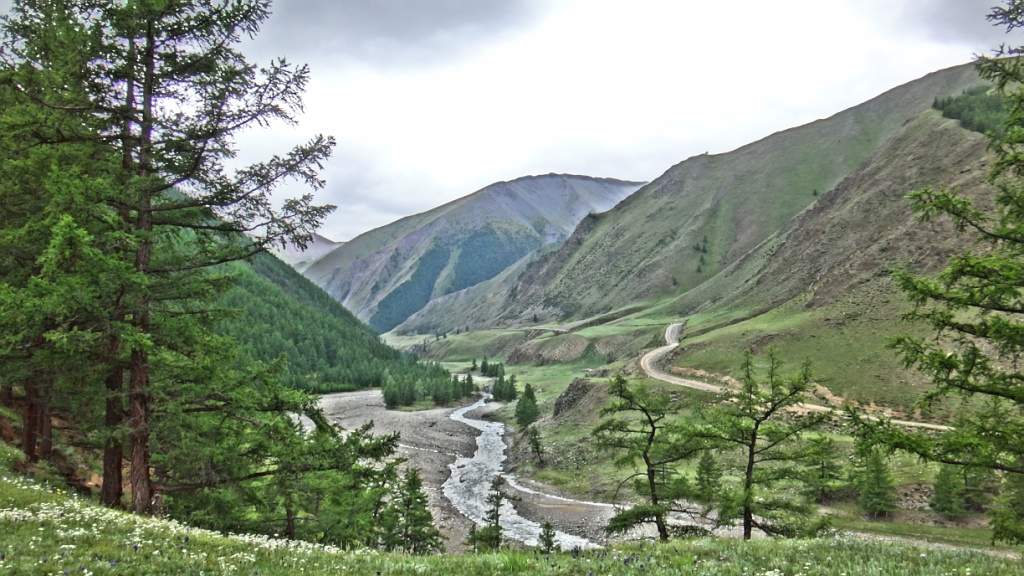
Grotto TWO-EYE
Dvuglazk's Grotto
Location: the grotto is located 50 km west of Abakan in the Bogradsky district of the Republic of Khakassia, on the r. Tolcheya 1.5 km to the west of the village of the same name
Dvuglazka (Grotto "Dvukhlazka", "Looking") - a multi-layered natural monument of the Stone Age in Khakassia. This name is due to the fact that in its vaulted ceiling there are two light holes of natural origin - two “eyes”.
This is the earliest known site of ancient people in the Minusinsk Basin (100 - 35 thousand years ago), studied by Z. A. Abramova in the 1970s. The entrance to the grotto is located at a height of about 50 m from the water's edge. The grotto is very convenient for living. It is capacious (15 m deep and 7-10 m wide), is oriented to the south and is well heated by the sun.
The excavation revealed several cultural layers, the lower of which belong to the Mousterian era. This is the time of the Rice-Würm Interglacial (100–80 thousand years ago) and the Würm glaciation (80–12 thousand years ago). Geologists believe that then the climate was relatively warm and dry. The steppe vegetation around the grotto prevailed. In the valley of the Yenisei grew dark coniferous forests: spruce, cedar. There was a lot of birch. Stone tools and many animal bones (food waste) were found in the grotto, the bones belonged to the kulan, horses, rhinoceros, bison, argali, saiga, and reindeer. From predators - bones of hyena, lion, bear, wolf, fox. From 40 thousand years ago, the layers belonged to the late Paleolithic, and from 12 thousand years ago (the upper 2 layers, 50 cm) to the Mesolithic.
Getting there: Take the M-54 from Abakan to the village of Krasny Kamen (about 47.5 km). Further to the village of Borodino 10 km. Grotto "Dvuglazka" is located 2.5 km from the village of Borodino and 1.5 km from the village of Tolcheya
Geographic coordinates: 54.084856 91.064752
Address:
Bogradsky district, village Tolcheya
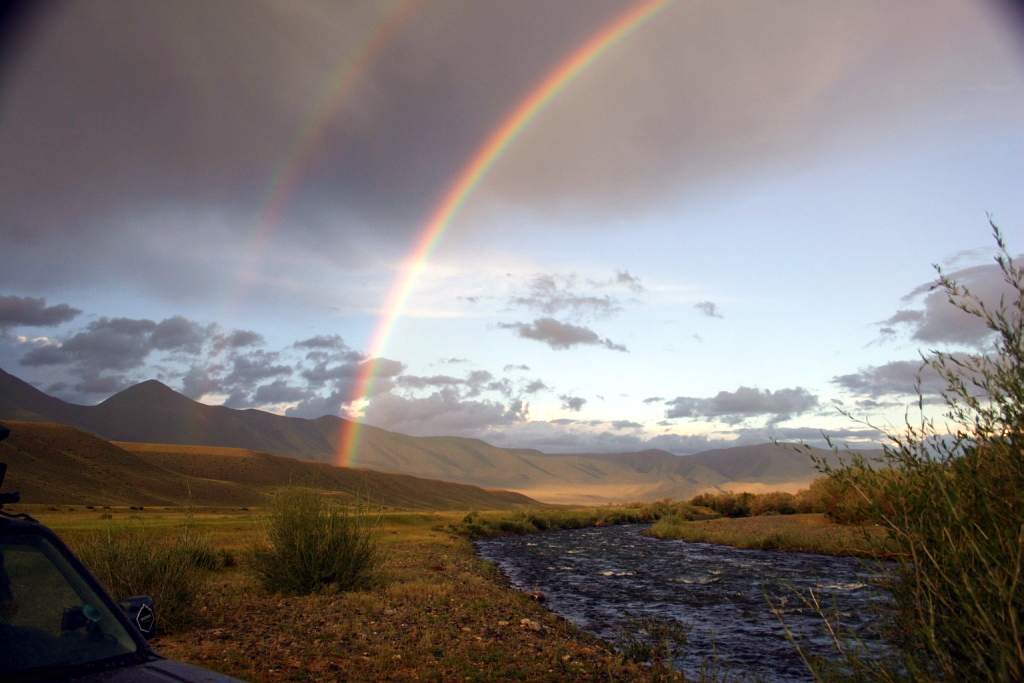
Chalpan Mountain
Location: the mountain is located on the territory of the State Nature Reserve “Khakassky”, on the “Lake Bele” site in the Shirinsky District of the Republic of Khakassia.
The height of the mountain is 586.3 above sea level. Chalpan Mountain is a mountain elevation on the northwestern shore of Lake Belyo. On the southern steep slope there are stony steppes with rock outcrops, and on various gentle slopes there are various types of steppe phytocenoses. Along the coastline stretches birch-larch copse. On the southern slope of Mount Chalpan, there is a unique pisanitsa, which is a graphic chronicle of history. Archaeologists have found that some of the rock paintings of Mount Chalpan belong to the second millennium BC.
Mount Chalpan has environmental, scientific, aesthetic, educational, aesthetic, recreational value. Here, in the old days, the Khakas got mines for the point of knives. At the top of Mount Chalpan is an ancient fortress.
How to get: from the town of Abakan on the highway M-54 to the village of Znamenka 80 km, then turn left and go 55 km to the village Borets. Then about 32 km to the village of Shira. Lake Bele is located approximately 25 km from Shira.
Geographical coordinates: 54.703889 90.154167
Address:
Shirinsky district, Bele lake
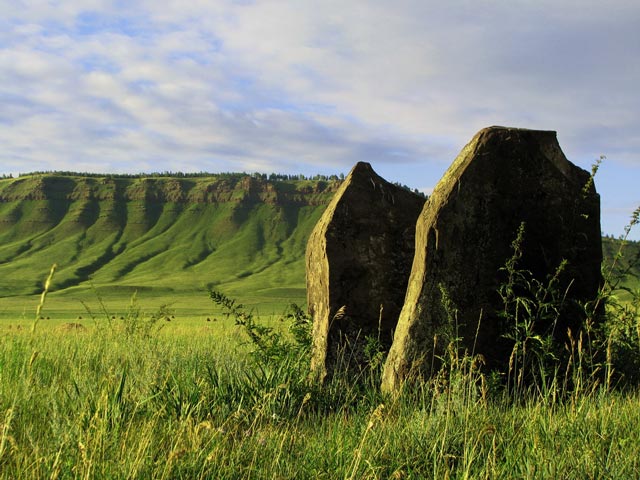
Ancient temple complex ZENHYR
Location: The ancient temple complex Zenhyr (Uzynhyr) is located in the Ust-Abakan district of Khakassia, near Prigorsk.
Translated from Khakassky, Uzynhyr means “long ridge”. The city with all its buildings almost went into the ground. Only thick, not less than 2.5-3 m, stone walls of the temple, 15-20 m from the settlement proper, are clearly visible. The material for construction was obviously delivered from ancient quarries and the rocky shore of the Yenisei. According to scientists, Zenhyr was built by Afanasyevtsy. Until now it was believed that they did not build cities, but lived in small villages and villages scattered along the banks of rivers. However, Zenhyr refutes this view.
Getting there: from Abakan to Prigorsk, about 30 km. The temple complex of Senkhir is located approximately 3 km from the village of Prigorsk
Geographic coordinates: 53.931111 91.286389
Address:
Ust - Abakansky district, p. Prigorsk
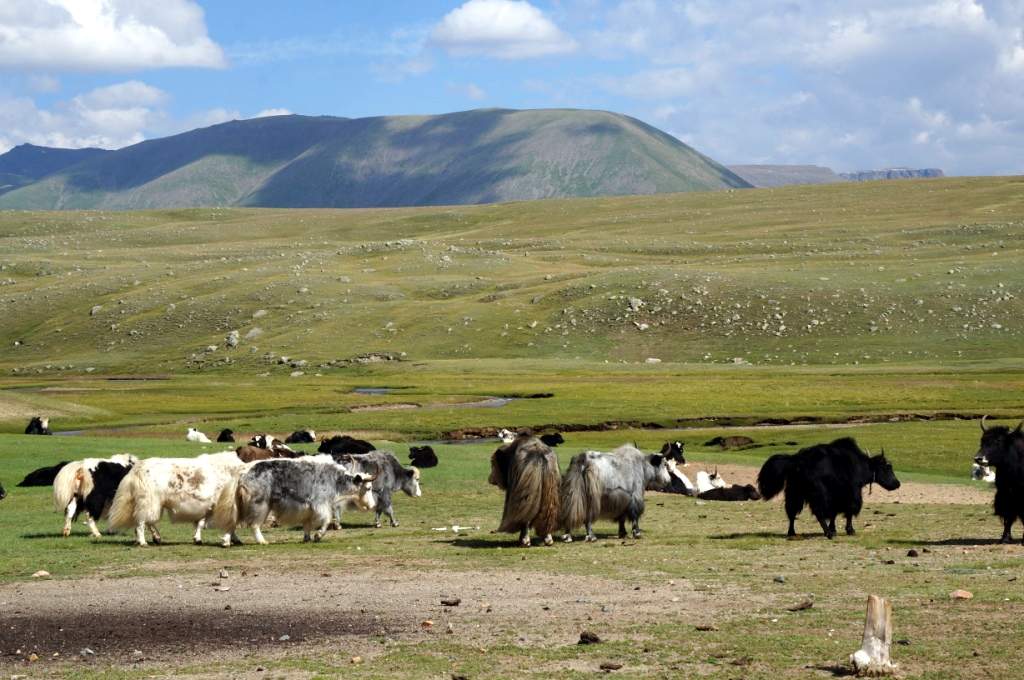
Mountain KYUN TAG (KUNYA)
Mount Kunya
Location: the left bank of the Krasnoyarsk reservoir, near the village of Ust-Abakan, Ust-Abakan district of Khakassia
The ancient mountain Kyun Tag or Kunya, translated from Khakassia means "the mountain of the Sun" and is a cult and sacred mountain for the Khakas, to worship the deity of the Sun. The height of the mountain is over 400 meters. At the top of Kunya mountain there is an ancient fortress, from where a stunning view of the Yenisei valley opens.
During the Bronze Age, more than 4,000 years ago, people used this mountain to hide from an enemy raid. It stretched along the ridge separating the gentle slopes of the mountain from its inner part, where not only women and children, but also livestock could hide in the decays. And male warriors could successfully defend the wall from enemies. It was impossible to get inside the fortress along the steep cliffs of the enemy - even weak women and children could easily throw the attackers down, bringing down the limestone debris on their heads. There is a lot of limestone in these places, which made it possible to lay down the wall without much labor. The ancient fortress was used for thousands of years.
Mount Kunya - a grand monument of rock art. Small, only a few tens of meters in length, a segment of the wall cuts off a cape with a flat ritual platform. On the rocky cliffs of this cape there is the famous Podkuninsk pisanitsa. On the ancient drawings of the scribing 323 figures are depicted: people, deer, goats, horses, camels, birds, bears. The drawings are dated to the 2nd millennium BC.
Getting there: from Abakan to Prigorsk, about 30 km. Further 12 km to the village of Mokhov. The mountain of Kunya is located 3 km along a dirt road from the village of Mokhov.
Geographic coordinates: 53.889803 91.418744
Address:
Ust-Abakansky district, pgt. Ust - Abakan, aal Mokhov
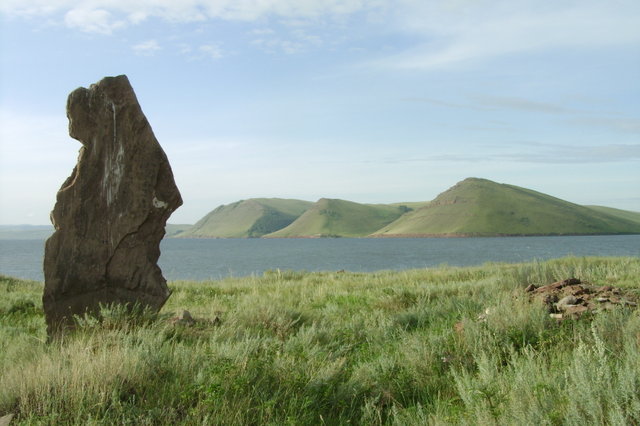
Tuim ring
Tuim ring
Location: the ancient monument is located on the 8th km of the Shira-p.Tuim road, in the Shrin district of the Republic of Khakassia
Tuim-ring is a burial and cult monument of Okunev culture. It is among the most interesting objects in Khakassia. A large square is laid out on a flat area between the road and a rock bed made of stones, and the diagonal of the square is also lined with stones. A cromlech (a circle of dug menhir stones) with a diameter of more than 80 m was built around the square.
In the center of the monument are plytic graves of a female priestess and two children. Along the circumference there are 4 large stones marking the four sides of the world. From the female burial to the east is a symbolic path lined with several small stones. In a way, the monument is unique and is compared in value to the English Stonehenge, although it is inferior in size.
It is believed that the Tuim-ring was not only a cult place, but also used as an ancient observatory - the stones in the corners of the Tuim-ring are oriented to the cardinal points.
Unfortunately, during the construction of the road, the old kromlekh was destroyed, and now you can only see its modern restored version. But the spirit and energy of the old place remained.
How to get there: from Abakan on the M-54 highway to the village of Znamenka 80 km, then turn left and go 55 km to the village Borets. Then about 32 km to the village of Shira. From the village of Shira to the village of Tuim, the distance is 18 km. The ancient monument "Tuimskoe ring" is located on 8 km of the road p.Shira-p.Tuim
Geographic coordinates: 54.393869 89.948518
Address:
Shirinsky district
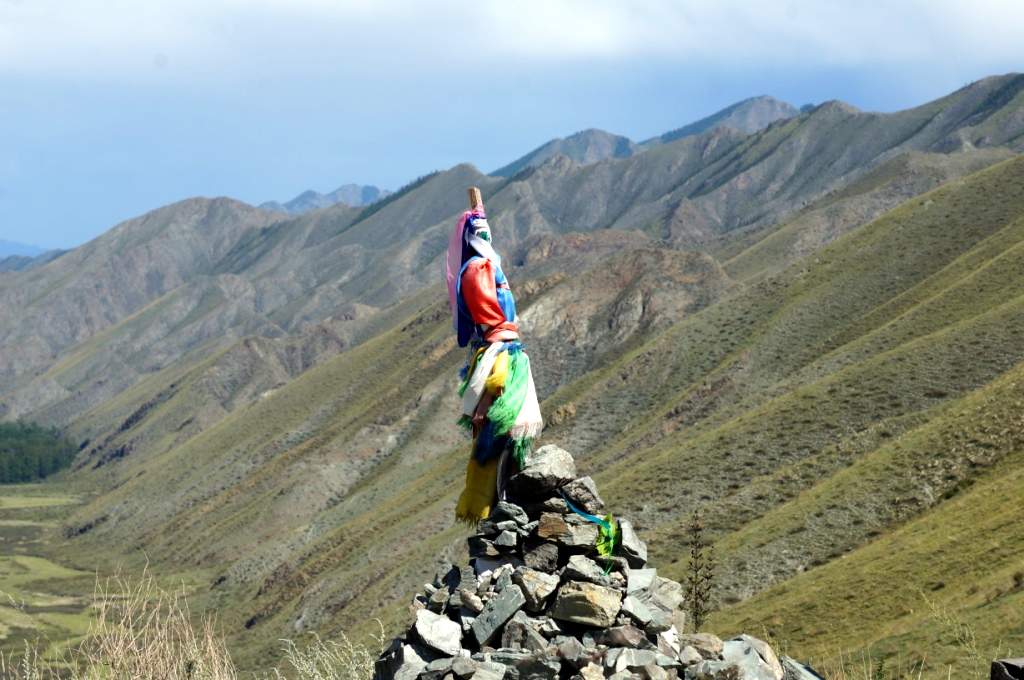
Gravity anomaly
The road Abakan - Sorsk, not far from the turn to the lake Ulukh-Gol, in a place called Kuten-Buluk - a gravitational anomaly - the cars themselves are going uphill, and the water is running uphill.
Perhaps large deposits of ores.
Julia mine
Bogradsky district Mine Julia. It’s impossible to call truth the uranium mine. because uranium was not specifically mined there, but uranium deposits are there ....
but already 30-40 years does not work and the village is abandoned. UFOs were observed.
Abnormal zones in the taiga
In the taiga areas of Khakassia, small patches of terrain with ugly trees are often observed, lightning strikes often in these places, and sometimes ball lightning is observed. Mechanical watches in such places are in a hurry or lagging behind, for a day for 2-3 minutes. When you are in such a place, the person feels some kind of insecurity, fear. The zone is usually clearly delineated, outside the zone everything is fine. Such zones are well identified by the method of biolocation, the angle of deflection of the frame reaches 180 degrees.
MYSTERIOUS FOREST
Nature smells sweet with lush green herbs and aroma of flowers, quiet whisper of leaves under the weak breeze and birds singing creates a unique peace and comfort in the soul. In the shade under the cool crown of the spreading tree, they ate well to rest lying on the grass, where life is also full of life, ants scurry about, a grasshopper creeps somewhere, a grasshopper chirps, but a chipmunk with swollen cheeks or a squirrel in the pine branches crawls, so clear and habitual life of the taiga.
Slowly I climb a hill on a slope and suddenly before my eyes an unfamiliar picture violates taiga harmony: not far away a large dark patch of dead forest, green grass suddenly breaks off, underfoot a thin layer of gray, dryish moss, mighty trunks of ugly trees completely bare, without bark, branches of fanciful form, they are almost twisted into a spiral, then spread out in a completely unnatural way, and not a single leaflet, even the wind does not sway them, as if in some long-forgotten old tale about Baba Yaga. Windbreak, old rotted trees, too, no, flat place overgrown with moss.
And the further I go into this dead kingdom, the more anxious my heart becomes, some unaccountable anxiety, a feeling of insecurity grows. No birds can be seen or heard, even mosquitoes, these eternal satellites of the taiga have gone somewhere and no longer ring in their ears, and on the ground in moss there are also no signs of life, only the huge curved roots under the trees protrude from the ground, as if they are also going to run somewhere . I involuntarily speed up my step and after ten minutes go out to the edge of this black spot.
Curiously, the boundary of the dead zone is clearly marked by dense green thickets that are filled with ordinary taiga life. How did this mysterious forest come about, and when I killed it, I don’t know, but insecurity disappears, and curiosity takes its place, I go back to inspect everything more attentively, at the same time I cut down some flakes from trees, the tree is clean, there are no traces of pests, the soil is loamy, only humus almost no, and where did he come from in a dead forest. It will be necessary to come back here in the winter, to look at the traces of animals, do they, too, bypass it. I heard many different legends about such places, but I saw it for the first time.
Abnormal area on the road
Again in Khakassia an accident occurred on the Yenisei highway. 405 km of the road became fatal for a resident of the village of Ust-Abakan, who, driving a HONDA ACCORD, lost control, hit a metal fence and allowed a congress into a ditch. According to the UGIBDD Ministry of Internal Affairs for the RC, as a result of an accident the driver received a closed craniocerebral injury, multiple bruises and abrasions of the body, hospitalized.
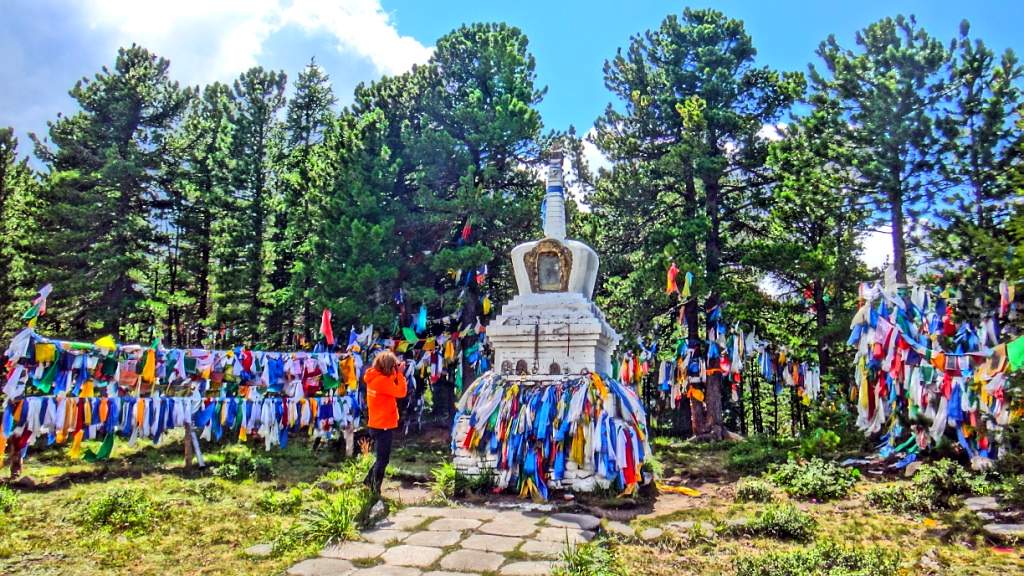
SACRED PLACES OF KHAKASSIA
At the XII congress of the Khakass people, held on March 18, its participants approved a list of the sacred places of Khakassia. The director of the Khakassky Research Institute of Language, Literature and History, Doctor of Historical Sciences Valentina Tuguzhekova told the Abakan correspondent about what this list is for and what objects were included in it.
The need to create a list of sacred places caused by socio-economic changes in recent years. Today, we can rent individuals to vast territories (taiga, fields, etc.), on which objects sacred to the Khakass people can be located. And it is necessary to do everything possible to ensure that these sacred places remain accessible for ritual practice. At the congress, we approved a list of 96 sacred places of the Khakass people, then we will transfer it to the Supreme Soviet of the Republic. We hope that in the future, within the framework of the law on historical and cultural heritage, the sacred places of the Khakass people will be taken by the state under its protection.
What is considered a sacred place?
In Khakassia, a list of sacred places was approved. The meaning of the word “sacred” (from the Latin “sacer” - sacred) is cult, ceremonial, secret. Sacred monuments of Khakassia are part of the ethnic culture of the Khakas.
Sacred, sacred place - a place with a sacred status; feature selected from the area everyday life and intended to perform regular cult activities aimed at interacting with sacred entities and forces. It differs from worldly and religious spatial objects by a set of ideal (spiritual) and material (physical) characteristics. Ideally, in religious consciousness, a sacred place is a high order value, the earthly abode of spirits and gods, a concentration of magical powers, evoking a feeling of awe and requiring extraordinary respectful attitude. The presence in historical documents or ethnographic data of such characteristics makes it possible to identify a spatial object as a sanctuary, a sacred place.
A concrete study of the ancient shrines shows that in most cases the places for their arrangement were not chosen arbitrarily. The person allocated places in the surrounding earthly world, causing strong emotional reactions, evoking imagination and stimulating intellectual activity; these space loci corresponded to religious ideas about the habitats of spirits, gods, and other "forces" marked by the quality of holiness.
In the early stages of history, the objects of the natural landscape (mountains, water sources, etc.) were marked strictly by genera. As a result, “tribal territories” were formed, which had pronounced natural boundaries. When developing the territory, the most important was the landscape object (valley, mountain, lake, etc.), that is, the place where people gathered for public events. Thus the ancestral places of worship took shape.
Among the peoples of Southern Siberia, natural places where national holidays were held, religious rituals, and shamanic rites were considered sacred, that is, sacred places. As a rule, sacred sites are associated with the traditional worldview of the indigenous peoples of Southern Siberia. As before, most of the indigenous peoples of Southern Siberia (Khakas, Tuvinians, Altaians, Shors) deify nature, the elements of nature, worship of various natural elements, spirits: the spirit of fire, the spirit of water, the spirit of mountains, etc, is preserved in people's memory and ritual practice. dd
What is included in the list
In Khakassia, as well as in other regions of Southern Siberia, not only sacred mountains, certain areas, but also archaeological monuments are attributed to sacred places: ancient burial mounds, stone sculptures, etc. According to the ethnographer Viktor Butanaev, in Khakassia there are about 200 places of worship, according to According to the Council of Elders of the Republic of Khakassia, there are more than 300 of them.
The most revered among the Khakass population of the sacred mountains: Borus, Izykhskie, Uytag, Samokhval, Chests. The mountains formed representations of the Khakas about their territory as a mountain-steppe country located in the center of the Sayano-Altai Highlands and surrounded on all sides by mountain ridges.
For example, the Kuznetsk Alatau in the poetics of Khakass folklore is called the “Ulgenny Son” (Divine Range), and the Sayans - “Khan Tigir Son” (Celestial Range).
The great mountain peaks of Khan-Purgus (Borus), Khan-Praday, Kol-Taiga, Khan-Chalban and others are the ancestral mountains from which the Khakass seoks originate from life. To honor the mountain spirits, every three years, shamans performed a ritual.
The honored mountains and localities that have their own patron spirits were called “Eliig Chir” - literally “the land that has its owner”. Usually there occur anomalous phenomena associated with the tricks of mountain spirits. Khakas respectfully refer to such places and, passing by, they must sprinkle wine or tobacco.
On mountain passes, sacred stone piles, “both”, were poured in honor of the host spirits. Every passing person is obliged to bow to them and contribute here. As a rule, men threw stones, taken during the ascent, and women stuck branches from the east side of birch trees.
If a person passed through the pass for the first time, then he necessarily had to tie a sacred ribbon “chalama” on poles stuck in piles of “both”, otherwise his life-age will be shortened. Near both you can not laugh or sing songs. In the presence of wine, those present three times by the sun bypassed the sacred pile of stones and sprinkled both with alcohol. At night, it was forbidden to climb the passes.
In Khakassia, a list of sacred places was approvedIn addition to the sacred mountains and mountain passes, the Khakass have worshiped the cult of water since ancient times.
Every year, at the beginning of summer, on the new moon they prayed to the water (sug tayii) at the headwaters of revered streams or on the banks of large rivers - the Abakan, the White and the Black Iyus, the Chulym and the Yenisei. AT
the lake edge of northern Khakassia was a water sacrifice on the shores of lakes. The prayer was held on such lakes as the Haara-Kol (Black Lake), Os-Kol (Osinovoye), Ayran-Kol (Ayranny Lake), Tigir-Kol (Heavenly Lake), etc.
In the valleys of the Abakan, Iusov, Chulym and Yenisei rivers, the Khakas annually held Heavenly supplications. In Khakassia, more than a hundred mountains have been marked, where prayers to the Great Sky were held on the dominant peaks, and 20 of them are called “Tigir tayychan tag” - the mountain of Heavenly sacrifice.
In some places, such as, for example, in the valleys of the Ulen, Kamyshta and Nina rivers, heavenly prayers were held every year on different mountains, but after three years they returned to their original position. For example, the Kirbizhekov family spent the “tigir of the Thai” in the first year on the mountain Bytag, then on the city of Hybytag, for the third summer on the city of Huyulyg-tag, then again everything was repeated. In the first year, the inhabitants of the aal Ust-Byur made a heavenly sacrifice on the city of Kolergit, in the second - on the city of Chan-Ssorah, in the third - on the city of Izykh-Tag in the upper reaches of the r. Uibat, and then again on Kolergit.
Abakan Kachins (aal Troyakov and others) organized a prayer to Neb on Mount Saxor, on the right bank of the Uibat (a tributary of the Abakan). Residents of various seoks gathered at it.
In addition to honoring the sacred mountains, water and sky, the Khakass people from ancient times worshiped burial places (the cult of ancestor worship), heavenly bodies, sacred menhirs, ancestral places, ancient sanctuaries. Of the most revered stone sculptures, Ah-tas (white stone) and Ulug Hurtuyah-tas (Large Stone Old Woman) should be noted. In a kilometer to the northeast of the village of Kazanovka, on the left bank of the river Askiz, until the sixties of the twentieth century, the picturesque Iney-Tas rock (the Stone Old Woman) towered. There are two more names for this place: Hoar-Haya (Old Scala) and Hoar-Frost (Hoar-Frost foot). This monument had two meanings: it was the ancestral mountain of the Mainagashevs and the patron of cattle breeding for the entire local population.
This is not a complete list of sacred, sacred places in Khakassia, which since ancient times have been honored and revered by modern Khakas, where traditionally shamans conduct rituals of sacrifice and worship to spirits and ancestors. In total, as we have already noted, the congress approved 96 sacred places of the Khakass people.
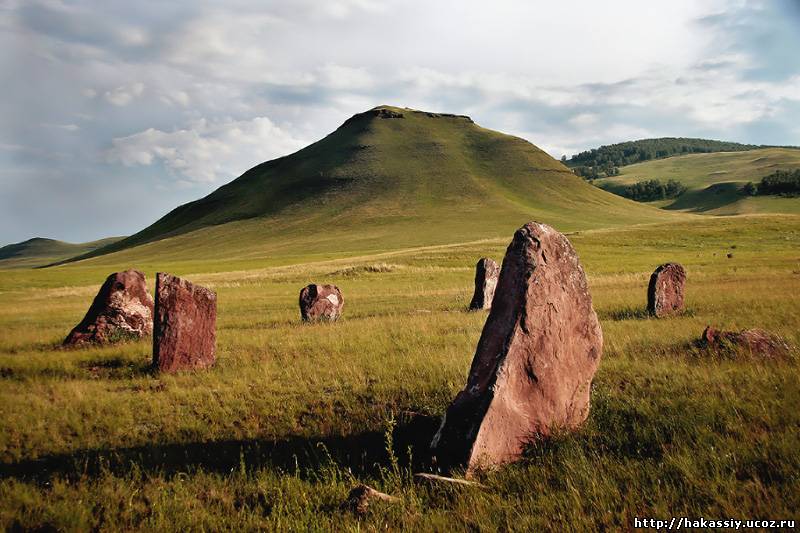
Mengir
The secret of the menhirs of Khakassia
The study of the locations of menhirs using geophysics and biolocation methods in Khakassia began in the late twentieth century. Doctor of Historical Sciences, Professor Ya.I. Sunchugashev and I, a geophysicist engineer. Such works were carried out during 1977-1999 under the program of the Khakassky Research Institute of Language, Literature and History. A total of 25 sites of ancient statues were studied.
Menhirs are detached stone sculptures, near which five or four thousand years ago there were sacrifices, religious rites and other mysterious ceremonial acts. Menhirs contain many unsolved mysteries, they contain amazing discoveries.
Man created the most complex technical systems, he can fly on spacecraft and study the depths of the World Ocean, “catch” fractions of a second and split atoms. But, admiring the amazing discoveries in the field of technical progress, it should be remembered that it is all generated by man, his extraordinary capabilities. Apparently, it was not by chance that in antiquity man was called a microcosm - the earthly embodiment of the mind of the Universe. Many scientists proved that our possibilities are far from being fully revealed, they are expanding not only with Even scientific and technological progress, but replenished and non-traditional ways of knowing the world.
One of them is dowsing, or in the modern concept - dowsing. The human body is constantly experiencing the complex effects of various geophysical fields - electromagnetic, gravitational, radioactive, and so on. It was the active response of the frame in the hands of the biolocator near the menhirs that forced them to look for the causes of this phenomenon. The biolocation anomalies near the menhirs are very impressive, and the effect observed here is very unexpected, still unknown to science. This anomalous effect suggests that the menhirs are located on the energy regions of the earth's surface.
Menhirs attracted and attracted the attention of narrators, connoisseurs and performers of folklore. The story-tellers in the course of the story about the outstanding heroes of the epic were skillfully introduced into the poetic works and the power of menhirs' influence on the surrounding world. Thus, in the story “Ai Huchin” it is said: “Having risen on a high stone ridge from the foot of the curved menhir, he looked into the distance, and when he saw, he found that the copper menhir is the umbilical cord of the earth.”
Apparently, the Khakas considered the places where menhirs were set to be sacred and unusual. In the legend “Khan Kichigay” it is reported that at the source of the light-changing river there is a white stone (ah-tas), which the heroes passing here must raise; many of them, unable to lift the white stone, died. However, the hero traveled this stone three times. The legend of the three ceremonial circles around the white stone is consistent with the reports of the first traveling scientist who visited Khakassia and Siberia, DG Messerschmidt. He noted in his diary on August 18, 1722 that "after an hour of driving, not far from u their burial graves, I finally got to the well-known among the peoples of the statue ... Khurtuyakh located in a hilly steppe.
I immediately sketched it and later attached the drawing to the real records. Khurtuy is carved from gray sandstone and dug into the ground obliquely. Behind, one could see hanging thick braids woven from hair, in the form in which Kalmyk and Tatar women wear them ... The Gentile Tatars from Ety Beltyr, who gave me horses, showed great honor to this old woman; each of them traveled around her three times ... put food in the grass closer to the pedestal so that she could use the food in accordance with her appetite. ” He further notes that the statue is revered among the indigenous population, as a gift they bring river pebbles to it, smear its mouth with butter, fat, milk and ask for health. Young women are treated for infertility.
We are not alone in conducting such pagan rites. So, in Belarus, the stone “Grandfather” (an exhibit of the museum of boulders in Minsk) once played a large role in the spiritual life of the people, because even half a century ago people came to him, looking for help in trouble. Stone, “Grandfather” was presented with honey, milk, wine - poured on top of the boulder. When a woman was seriously ill, she put an apron on the boulder for 33 days. Another example is the famous boulders “Demian” and “Marya”, located on the outskirts of the village of Perezhir, Minsk region. It was believed that they have miraculous power, capable of healing paralytics, lame, deaf. Boulders brought rich donations: flax, wool, bread, piglets, calves, sheep, money. It was believed that the result would be favorable if you make a pilgrimage to the stones at certain times. Such a ritual is one-to-one similar to the ritual conducted by the Khakas at Menhir Khurtuy.
The church for the most part tolerated the customs of the inhabitants. Moreover, the most famous boulders were made crosses, chapels, erected temples. People prayed, asked for a stone to get rid of trouble and disease. Stone went to the pagan feast of Ivan Kupala, and the Christian Trinity and Easter.
In the European part of Russia, experienced bio-locators have identified a number of energy sites, the so-called places of power: Solovki, Valaam, Kizhi, the pagan temple of Uks on the right bank of the Ladoga, the Trinity-Sergius Lavra, where the cell of Sergius of Radonezh is located. So, the famous “place of power” of the Solovki is on the Big Zayatsky Island, where the famous “northern labyrinths” are located, erected by an unknown people. The people who penetrated into these structures were observed to “smooth” the functions of the body: for example, in 10–15 minutes, increased pressure returned to normal and at the same time a surge of vitality could occur.
Within Khakassia, we studied the sites of menhirs only in the territories of Ust-Abakan, Askiz and Bogradsky districts. All investigated menhirs are located in geopathogenic zones that are associated with fracture zones of the earth's crust. Geopathogenic zones are areas of the earth’s surface that emit a hitherto unknown energy flow to science. As a rule, the width of these zones is insignificant and varies between 10 and 50 meters, and the length is many hundreds of meters, and in some cases kilometers. In terms of the form and strength of the impact of these fields on the biolocator, we have divided the geopathic zones into two types: high-frequency (negative), when the vector of the measured field is directed "fanlike" (in these places the human biofield is unbalanced, which ultimately leads to pathology) and low-frequency (positive), where the sinusoidal shape of the curves of the biolocation effect appears, while the direction of the vector of the measured field in one part of the anomaly is fixed strictly vertically down, in the other - up. In these places is the alignment of the human biofield, which contributes to its improvement.
For simplicity of narration, we will call geopathogenic zones of the second type “places of power.” Three such places have been identified on the territory of Khakassia: the site of the Ulug Khurtuyas Tas stone statue, which is located at the 134th kilometer of the Abakan-Abaza highway in the Askisk region, where the museum complex. Here the biolocation survey determined that the stone statue was established by the ancient people within the low-frequency geopathic zone in its positive epicentral part. The low-frequency geopathic zone identified by them It has a sinusoidal shape and a width of about 20 meters, its long axis is oriented to the northeast. The intensity of the biolocation anomaly here is about 450 conventional units. As already noted, the Khurtuis were treated with various ailments, they were treated for infertility. The “place of power” is not empty, tens of thousands of people visit it in a year.
The second is the site for the parking of two menhirs - the Big Gate, which is located in the Ust-Abakan District, two kilometers northeast of the Big Salbyk Kurgan. Biolocation studies revealed that these monoliths were installed in the low-frequency geopathic zone, which is 23 meters wide. Biolocation anomaly in this place of sinusoidal form with intensity of 450 conventional units. At the same time, the menhirs are installed on the curve "inflection line. The stone on the right side (if you look at it from the south) has a depression in the shape of the human body. This depression was formed from the" friction "of people on the stone, who came here for thousands of years to heal or to perform some ceremonial rites. On the end of the monolith, a tamga is carved in the form of a human body contour with three rays emanating from the head. Everything indicates that this "place of power" was used by ancient people to eliminate these or other ailments.
The third place is the territory of the Small Palace of the ancient Khakass state: at the 34th kilometer of the Abakan-Askiz highway, 50 meters east of the highway. Here, literally five meters from the southeastern corner of the "palace" excavation, a linear low-frequency geopathic zone 18 meters wide in the northeast direction was revealed. The anomaly has a sinusoidal shape with an intensity of up to 800 conventional units. There is no doubt that the place for the construction of the palace complex was not chosen by chance. Apparently, this place was revered by ancient people, and earlier it was recorded by the menhir, but with the passage of time the stone was lost, most likely, “reused” during the construction of burial grounds, as is often the case happened in Tagarsky and later epochs. Many researchers believe that there was a hospital. So it is or not, but one thing is clear: the biolocation anomaly in this place is identical in shape, structure and intensity with the anomalies found in the cult places of Ulug Khurtuy Tas and the Great Gate, which were used for medicinal purposes. Therefore, today it has become necessary to fix this anomalous zone by placing an appropriate stone statue here. This work was carried out by the republican council of the elders of the Khakass people and its chairman Vladislav Torosov, establishing a granite menhir called Abchakh Tas (the stone grandfather).
For preventive and therapeutic purposes, I recommend that newspaper readers visit the “places of power” whenever possible and stay there for at least 15 to 20 minutes. I advise you to bring water containers with you in the anomalous zone, because under the influence of the force field water molecules will be arranged in a certain order - that is, the water will become structured, the use of which will further contribute to the healing process.
The mention of the Koshkulak cave in an interview with the "white" shaman Tatyana Kobezhikova interested many readers who live outside of Khakassia, but have already heard about the mysterious dungeon. Their request is to tell about it in more detail. Freelance correspondent "A & F on the Yenisei" Viktor Melnikov has long been collecting interesting observations of visitors to the mysterious cave.
This place is known all over the world. It is officially included in the top five "worst" places on the globe. Anomalous scientists call this mysterious emptiness in the mountain range somewhat lofty: the black devil's cave. Its geographical name does not sound so menacing - the Koshkulak cave. The name was given to her by one of the tops of the spurs of the Kuznetsk Alatau - Koshkulak. From the village of Shira to it - a little more than 20 kilometers.
black rites 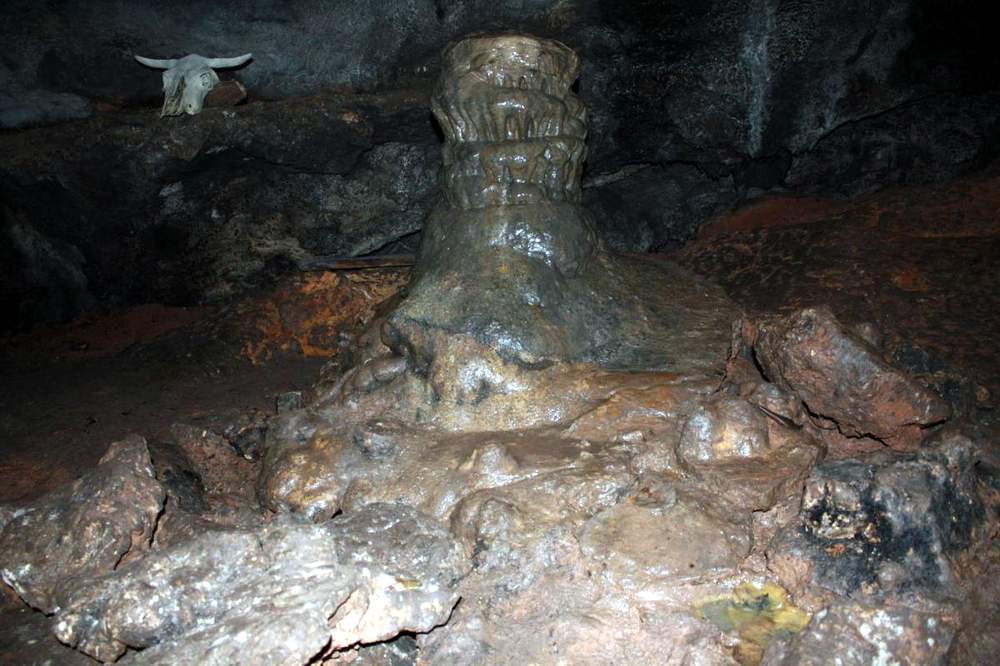
Young "old woman"
For the first time I heard about this cave about 15 years ago from my friends speleologists, brothers Nikolay and Vladimir Savchenko. After returning from another trekking tour of the Kuznetsk Alatau caves, they told me terrible stories about half-decayed human bones found in the cave, shadows and sounds of the shaman’s tambourine, unreasonable horror that they experienced while passing a certain section of this cave. The brothers also told the story, which they, in turn, heard on the march:
"In the 1960s, a group of 20 students climbed into this damn hole. Only two students came out of it. And then one girl in a violent, irresponsible state was picked up by hunters near the cave. She bit and shouted something incoherent. She was immediately hidden in the psychiatric hospital. The second student went crazy “quietly.” At night, she was discovered by a police squad in the village of Shira. Gray-haired, with a mortal face, lips bitten with blood, she walked through the dark streets of the village. In her hands she squeezed some kind of stone figure which I never wanted to give back. vayas for a second, it is something very quickly and warmly whispered. And this girl identified in mourning house, where she spent a month "burned" by some mysterious illness.
Doctors could not establish the cause of death - the rapidly thinner patient was insane, but completely healthy. Under the mattress of a young "old woman" who let out the last breath the nurse discovered a small stone figure ... "

Fox hat with horns
I confess - then I did not believe the storytellers. I even mocked them, accompanying their story with witty, as it seemed to me, comments: how many, they say, the brothers drank before listening to such tales. However, it took about six months, and my friends again went to another campaign on Koshkulak. In the group of 30 people there were mostly schoolchildren - the November holidays were on. Our tourists spent near the cave about three days. The first two expeditions under the ground were calm.
The schoolchildren heard about the horrors of Koshkulak and the schoolchildren who dreamed about the thrill were disappointed. On the third day, before winding down the camp, they asked the adults one last time to "run through the cave." After having gone around all the grottoes, including the Skeleton's grotto, where usually, according to eyewitnesses, and the incredible happens, the guys were about to go upstairs.
At that moment, everyone suddenly felt a chilling attack of horror. Schoolchildren rushed to the exit, pushing no less frightened parents and teachers ...
Already in the light of the sun, when fear let go, the pioneers and their followers vied with each other to share what they had in the depths of the cave. Each, as it turned out, the horror had its own "appearance". Some saw an eerie monster with a bear’s torso and a bloody human skull instead of a head, others saw huge crows sitting on a pile of bones, a third “appeared” (to my familiar speleologists, including) a disgusting old shaman with a tattered fox hat with horns beating a tambourine and making intricate body movements. With gestures he seemed to call to himself ...
Some time after the group returned home to one of the participants in the hike, a sixth grader, they were found hanging in the attic of their own home. He left a posthumous note of very strange content. The boy wrote about some kind of stone devil, dark burrows and madness. And at the end: "... die, but remember the stones." Parents of a boy who passed away claimed that this phrase was written in another handwriting. 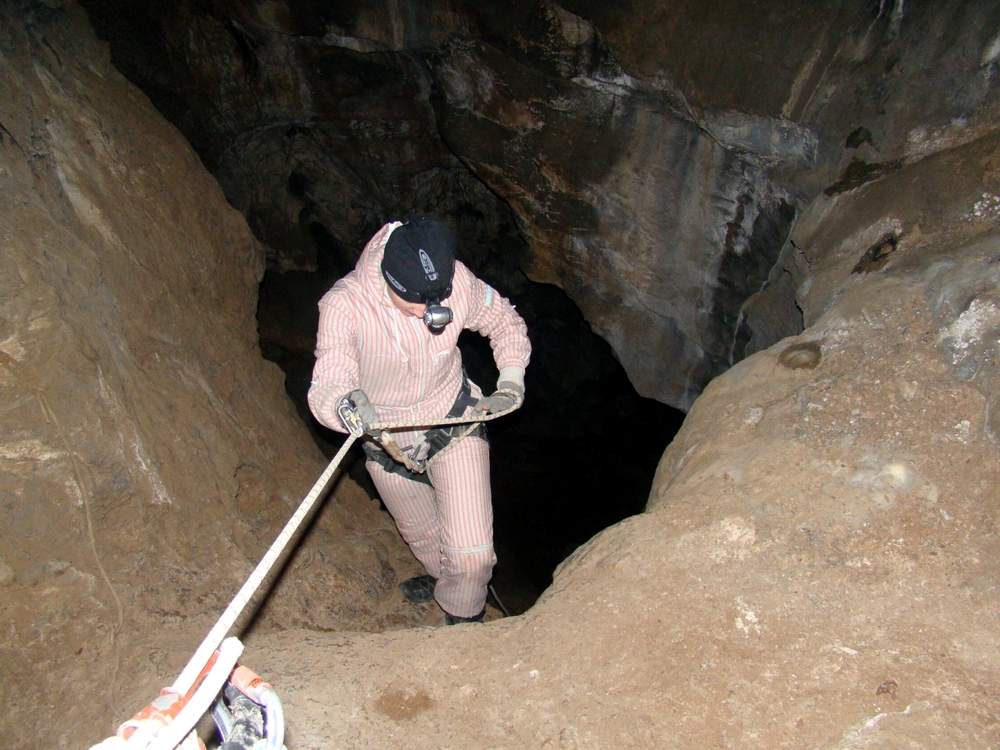
Scorching look
Back in the 1980s, scientists from the Novosibirsk Institute of Clinical and Experimental Medicine became interested in the Koshkulak cave, rumors of ghosts that lived in its depths. Expeditions were set up to study the phenomenon of the cave.
Perhaps, then, for the first time, scientists recognized that visions are not just fantasies of sightseers who were frightened by the darkness. In 1985, a member of the institute Konstantin Vakulin and a group of speleologists examined the grottoes. After a few hours of work, people reached out. Constantine was the last. Secured the rope on a special belt, prepared to climb. And suddenly he felt a gaze on himself. Scientist overwhelmed with fever. The first impulse is to run! But the legs did not obey. See what was going on behind his back, it was incredibly scary. And yet, as if in a state of hypnosis, obeying someone else's will, he turned his head and saw about five meters away from him ... an elderly shaman.
The same from the stories of my cavers: fluttering clothes; shaggy hat with horns, burning eyes and smooth, inviting movements with his hands - they say, go, follow me! .. Bakunin unconsciously took a few steps into the depths and immediately, as if throwing off the dark spell, began frantically tugging at the rope. Not succumbing to the "persuasions" of the cave shaman, he, quite possibly, avoided the fate of those who had once been lost or were moved by the mind.
Another member of the expedition, Nikolai Kamanov, witnessed almost the same visions.
Summarizing the evidence, the scientists suggested that all these hallucinations, unaccountable, panic fear, of course, not the machinations of dark force, but the result of a completely material external influence. It is known, for example, that infrasound with a frequency of about 6 hertz can cause a feeling of indescribable horror.
In one of the grottoes of the cave of the black devil a special laboratory was deployed. Researchers made experiments there, carried out various measurements. As a result, a geomagnetic anomaly was established. The electromagnetic field in the cave is constantly fluctuating. Even at the initial stage of the research, scientists noticed that among other signals a strictly defined impulse is steadily breaking through. Sometimes it was fixed as a single, it happened that he walked "bundles". And always with the same amplitude. Sometimes, the signal disappeared for two or three days, or even for a week, but then invariably returned.
Holy stalagmite 
Mysterious lighthouse
Scientists wondered: where did these strange impulses come from? After a series of experiments, it was found that they are making their way from the depths of the cave. It was decided to check whether these impulses are connected with terrible visions that are those who were in the cave. The time of fixation of impulses coincided exactly with the moment of the appearance of nervousness in people, a suppressed state turning into panic horror.
The impulses, as the scientists supposed, turned out to be low-frequency. Those who are not perceived by the human ear, but have an impact on all life, including the human psyche. But where do they come from? The institute staff has no doubt that only an artificial radiator is capable of generating such a frequency pulses with a stable amplitude of oscillations. But where did he come from in the taiga, deep underground? Scientists examined the entire cave, descended into the most hidden corners - in vain. The search for an artificial emitter was not successful. The mysterious lighthouse, if it only exists in nature, is even deeper.
With regard to hallucinations (and scientists believe the terrible visions are just innocuous "glitches"), research participants agreed on this version: the perception of non-existent objects as real can be caused by some unusual chemical mixture present in the air that fills the cave. However, what this mixture is and how well it is studied is not yet known. The following question remains open: why does the vision "come" to many precisely in the guise of a shaman? With hallucinations, it does not seem to be so - this, like dreams, is an "exclusive" phenomenon. However, one-time expeditions could not, probably, dispel all myths. The restructuring that began at that time asked far more burning questions. So the solution to the secrets of the cave of the black devil, probably ahead. In the meantime, in the absence of a materialistic justification of what is happening in the dungeon, from mouth to mouth, along with heartbreaking stories, ancient legends are transmitted. 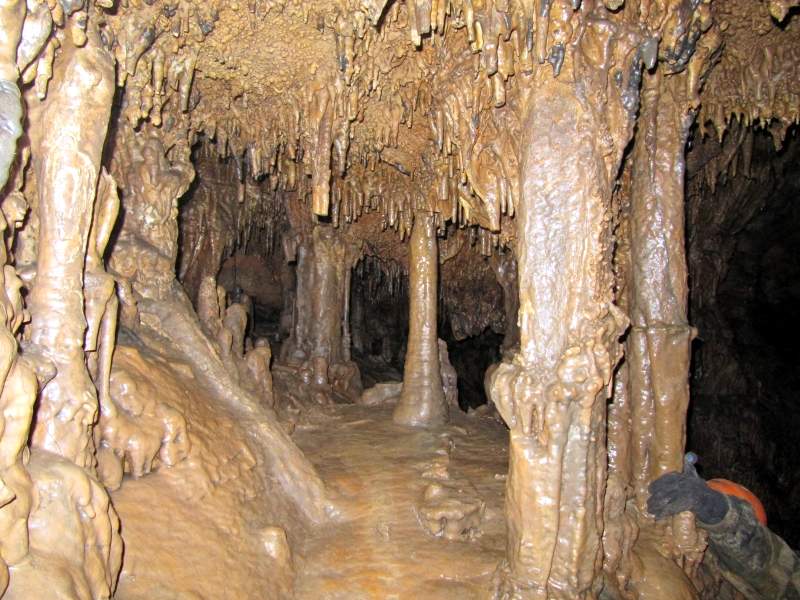
Revenge of the Shaman
ONE of them in the previous issue of AiF on the Yenisei was shared by the “white” shaman Tatyana Kobezhikova. Once, a shaman was buried near this cave. People violated his peace, and he punishes them with what he is in a dream, and even in reality in the image of a man in strange clothes, dragging him along. According to local rumors, the spirit of the ancient Khakass shaman dwells in the grotto of Ghosts, which is adjacent to the Skeleton grotto.
According to another legend, the Koshkulak cave was a cult place among the ancient Khakas. Here, the pagans worshiped not only the phallus as a symbol of procreation - around the natural stalagmite in the form of the phallus an ancient fireplace was preserved. Here, according to the legend, the ancestors of the Khakas worshiped the black devil, offered sacrifices to their gods, including the human ones. In favor of this legend speaks of the ancient altar, which has survived to the present day. Who believes in this legend, believes that the cave over the centuries has absorbed the dark energy of the ancient shamans, who, guarding their secrets, spill from time to time to the overly curious guests of the cave.
skeleton Grotto 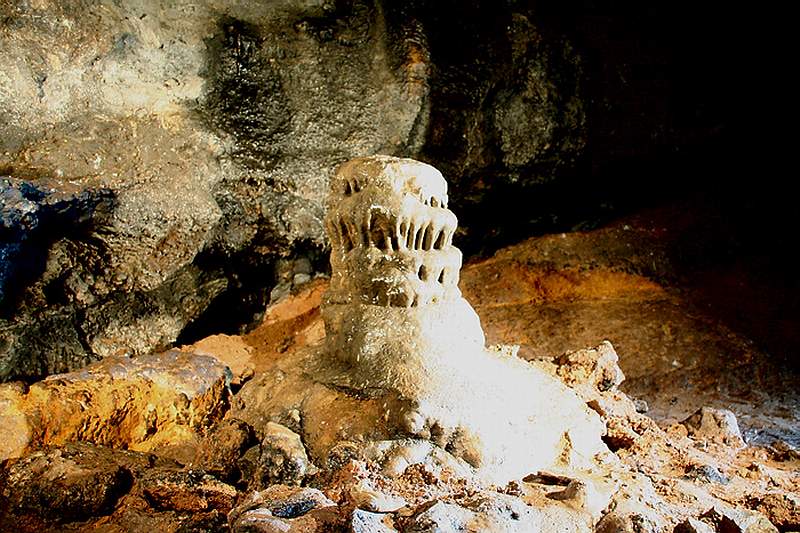
Kolchak's Gold
Myths associated with the Koshkulak cave, not only do not die, but are born. In tourist booklets with you, for example, will share assumptions that Kolchak's gold is hidden in one of the grottoes of the black devil, that Solovyov’s secret armory has been lost here. The faithful Leninists cannot but be touched by such a version: the young commander of the Uzhur Chonovtsy Arkash Golikov, at the entrance to this cave, received his legendary nickname Gaidar.
Road to hell
One of the most mysterious places in Khakassia is the Koshkulak Cave. This mysterious place is located high in the mountains not far from the remote taiga village of Topanovo, Shirinsky District. Without an experienced caver or local conductor, it is dangerous to enter the cave - it’s almost a vertical descent about three hundred meters. Yes, and to get to the cave is not so easy - not every car will master the infinite gravel road. Then peshochkom on the taiga uphill need to sink. And in the places of those living creatures of every kind - in bulk. You will meet the soul of a shaman or not - another question, but a brown bear - easily.
I tried to persuade some of the locals to escort to this cave - it is useless. No money needed. They say that if the black shaman drags on, he will not let go.
Cat is considered a cult place. Some say that once in this cave people were sacrificed (children were killed or young women were killed - no one can say for sure), and now this place has a very bad reputation. They say that the souls of the ruined rest cannot be found and they revenge alive for their joyless existence.
Not one scientific expedition visited there, some even saw this very black shaman, about whom the locals speak. One researcher who did not wish to be named told this story:
“Our group went down to Koshkulak to check. The cave is not the deepest, in the Shirinsky region there are both deeper and more beautiful. And this, indeed, some kind of black human bones, we didn’t find there, but there were a lot of animal bones there. Maybe they come here to die. The sensations in this cave are not pleasant, but we did not notice any obvious manifestations of something special. Almost all of our group went up. I was the last in the chain, and for some time I was left alone in the cave. Suddenly I felt a gaze on myself. He turned around and was stunned: a creature separated from the wall - either a man or a beast - a body like a human, something like a black mask on his face, and twisted horns on his head. This creature looks at me and beckons with his finger. I, fascinated, reached for the rope to untie the knot. At this time, someone on top of me called out, I woke up and pulled the rope with all my strength. What was it - a dream or reality? But I was still impressed for a long time. Sometimes this shaman (this is how the locals describe a black shaman) I later dreamed of. No, I will not climb into this cave anymore. ”
- 8492 views
- What is useful walks
- Age periodization of human development
- How to create special conditions for children with disabilities
- Memo on the procedure for the official use of state symbols of the Russian Federation during official sports and recreation and sporting events
- Classification of vowels and consonants
- What is the difference between a speech therapist and a pathologist?
- Open speech therapy session in the preparatory group of a kindergarten for children with onr "Journey to the Land of Knowledge"

 Live journal
Live journal Facebook
Facebook Twitter
Twitter